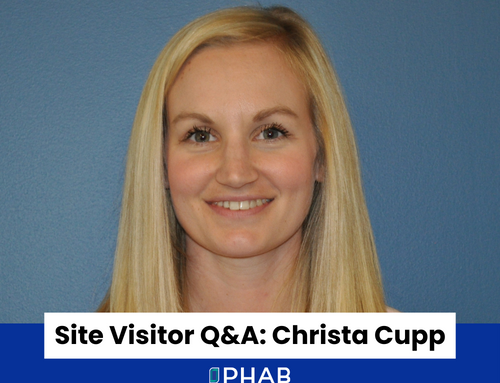The Public Health National Center for Innovations (PHNCI) and the de Beaumont Foundation released the proposed revisions to the 10 Essential Public Health Services (EPHS) for vetting on March 2, 2020. Since that time, we have received a few questions and while all of the information is available online, we compiled a few frequently asked questions to point to information about the initiative and held a webinar to answer additional questions or clarify the information below.
1. Is the 10 EPHS about health departments?
The 10 EPHS is about public health writ large. It is NOT focused only on governmental public health, rather the system of entities that conduct public health work. It is important to keep this in mind when reviewing and commenting on the framework.
2. How was this proposed framework developed?
Data were collected from 1,350 stakeholders from April-November 2019 through an online survey, townhalls (3 virtual and 2 in-person), and numerous crowdsourcing events. All data were analyzed and summarized for presentation to the Task Force during their January 30, 2020 meeting. The Task Force, using these Guiding Principles, deliberated and provided recommendations on what changes were needed to the framework. A summary of that meeting, including recommendations, is available here. The Task Force meeting and discussions informed a first draft of the proposed framework and the Task Force reviewed and provided comment on that draft. It was subsequently revised and informed by an expert communications firm, further reviewed and revised with Task Force input, and presented to the field for vetting on March 2, 2020.
3. How did the field inform the proposed framework?
Responses to the online survey and crowdsourcing events (including the townhalls) underwent qualitative and quantitative analysis. Data were presented to the Task Force to inform their discussions and recommendations. Data collected during the vetting will be analyzed and considered in the same fashion. A brief highlight of the respondents and high level themes can be found here. A detailed summary of the data will be posted to PHNCI’s website with the full project report soon.
4. Is there a document that compares the original framework with the proposed framework?
We debated whether or not to include a side-by-side comparison between the original framework and the new version, but ultimately decided what we wanted was for the field to weigh in on the new framework – whether it does a good job describing what we as a field do and will need to do as the world changes in the future. We wanted it considered on its own rather than as a word-by-word comparison that would invite more wordsmithing instead of an assessment of the concepts we’ve tried to capture as a reflection of what public health does and needs to do. Anyone can download the original framework and documentation and do a detailed comparison if they wish – but we were trying to solicit comments on the new framework as a standalone document.
5. What are the key differences between this framework and the original?
A majority of respondents to the data collection efforts suggested either making “minor revisions to the existing framework” (50%) or “major revisions to the existing framework” (35%). Taking that feedback and also discussions of the Task Force, the proposed 10 EPHS framework looks similar to the original but does have some noteworthy differences.
- The need to add equity was a clear theme from data collection efforts. According to Task Force recommendations, equity concepts were embedded in the proposed framework, both in the introductory statement and definition, and in the contents of the services.
- Language throughout the 10 EPHS were assessed, updated, and modernized as needed. Concepts that were not prevalent in public health practice in 1994 were added, like informatics and data sharing. There is an increased emphasis on cross-sector partnerships and community engagement embedded throughout the new version, and the role of public health and healthcare was clarified.
- EPHS #10 is new and focuses on organizational infrastructure – pulling in the “system management” elements from the previous version. The original EPHS #10 contents were moved and/or amplified in the other Essential Services (e.g. research is now in EPHS #9).
6. What are you looking for via the vetting survey?
We want to know how well the framework as a whole, and the individual Essential Services, reflect what public health is and should be doing now and into the future. When providing comments, we want to know whether you agree or disagree with what is proposed and what comments you may have. We ask for concrete ways to address any concerns or questions you may have – e.g., if you don’t agree with the way an Essential Service is framed, please recommend some language changes in the comments to guide us in making revisions. Simply stating you disagree but not providing comments won’t help us to ensure we are hitting the mark with the final framework and that it accurately represents what public health does. We are serious when we say we want your input and that this is a field driven effort!
7. How will information from the vetting be used to inform the final framework?
Data collected during the vetting will be analyzed and considered in the same fashion as the initial data collection efforts – analyzed and presented to the Task Force to inform their discussions and recommendations.
8. When will the final framework be announced?
The framework will be launched in September 2020. For those unable to attend in-person, the 10 EPHS launch will be livestreamed for free. The framework will be posted online and disseminated broadly and additional webinars focusing on dissemination and uptake of the framework will be held after the launch.
9. Are the proposed 10 EPHS available in languages other than English?
Yes, the proposed framework and vetting survey are available in Spanish. A Spanish version of the new framework will be released once it is launched in September 2020.
10. Where is more information available?
Information about the Futures Initiative is available on PHNCI’s webpage about the 10 EPHS and is updated regularly. View the recording of a webinar that provided more details on the the process and next steps.
11. How do I know if my comments were fully submitted? I tried to click “Next” but it redirects me to the top of the survey.
There is one mandatory question in the survey (question #36) that asks for your organizational affiliation. If you do not answer this question, you will not be able to submit your responses (if you select “No” as your answer) or advance to the next page to enter in your contact information (if you select “Yes” as your answer). Once you have submitted your responses, you should see a Survey Monkey endpage that says “Thank you for taking this survey.”
For questions, please contact Jessica Solomon Fisher, Chief Innovations Officer for PHNCI at [email protected].





